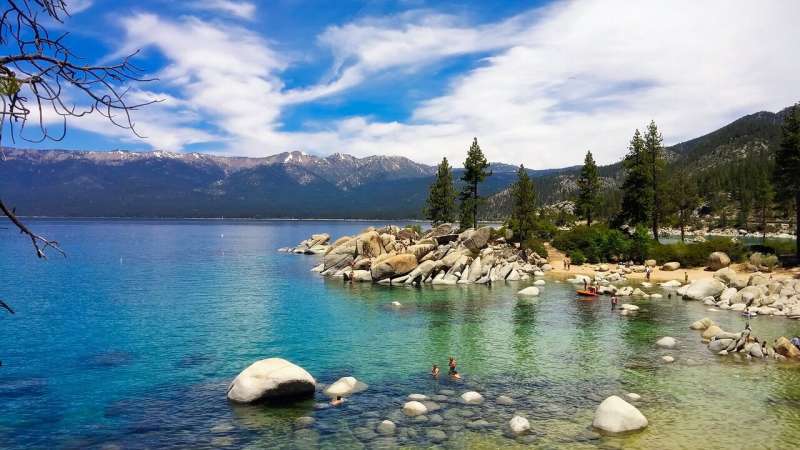This article has been reviewed according to Science X's editorial process and policies. Editors have highlighted the following attributes while ensuring the content's credibility:
fact-checked
reputable news agency
proofread
Lake Tahoe's clarity is the best it's been in 40 years: Researchers say this animal is helping

Lake Tahoe's blue waters are making a significant comeback.
In the last half of 2022, "Lake Tahoe was the clearest it has been since the 1980s," according to the 2022 Lake Tahoe Clarity report released Monday, which said clarity reached nearly 72 feet using the Secchi disk to measure visibility in the iconic waters.
Scientists with UC Davis' Tahoe Environmental Research Center said the improved clarity is "due in part to a resurgence of the lake's native zooplankton," researchers said in the report. "They've provided a natural clean-up crew to help restore the lake's famous blue waters."
The native zooplankton are small, microscopic animals. Since the 1960s, the zooplankton populations have decreased due to the growth of its primary predator, the Mysis shrimp. Zooplankton, especially the Daphnia and Bosmina species, have dropped to dangerously low levels over the years, hitting a record low in 2021.
Despite low levels of zooplankton, the lake still remained clearer in 2021 than it was in 2017, the murkiest year. Clarity in 2021 had been the second-worst on record at a depth of 61 feet.
Particle levels in the lake also hit a record high in 2021, with scientists finding that particles from wildfires might have caused the rise in particles and, therefore, the low clarity. Zooplankton are important to ensuring the lake's clarity because they eat the particles that cloud the lake.
Lake Tahoe made a comeback in 2022, with its average annual clarity reaching 71.7 feet.
"We expect the impact of Daphnia and Bosmina to grow over 2023, and clarity may return to 1970s levels—despite the expected large runoff from this year's record snowpack," said Brant Allen, the research center's boat captain.
The goal for officials in both California and Nevada is to return the lake clarity to its historic 97.4 feet, the report said.
Mysis shrimp populations are expected to rebound, putting the zooplankton at risk, meaning population control measures might need to be implemented to preserve the lake's clarity, researchers cautioned.
More information about the clarity of Tahoe is expected in the Tahoe Environmental Research Center's 2023 State of the Lake report, which is expected to be released in July.
2023 The Sacramento Bee.
Distributed by Tribune Content Agency, LLC.





















